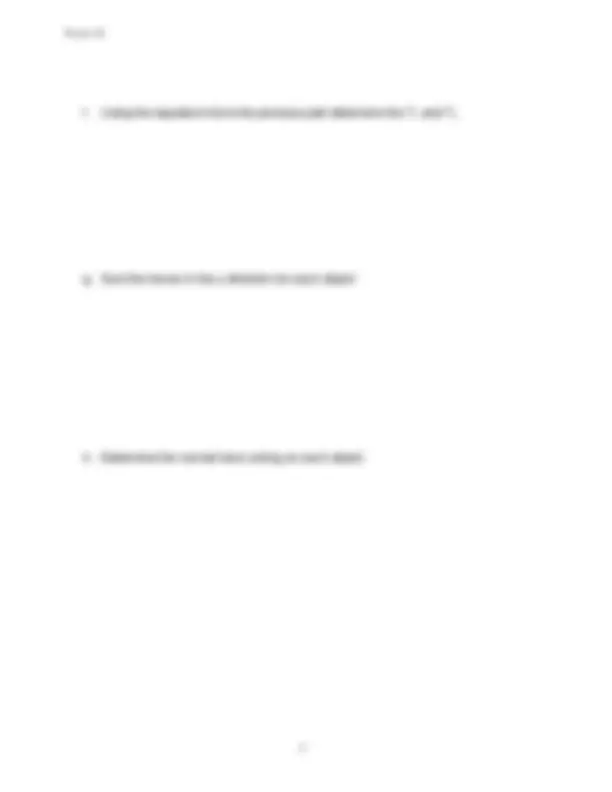



Study with the several resources on Docsity

Earn points by helping other students or get them with a premium plan


Prepare for your exams
Study with the several resources on Docsity

Earn points to download
Earn points by helping other students or get them with a premium plan
Community
Ask the community for help and clear up your study doubts
Discover the best universities in your country according to Docsity users
Free resources
Download our free guides on studying techniques, anxiety management strategies, and thesis advice from Docsity tutors
This worksheet from physics 2a provides a problem involving three connected blocks moving across a frictionless surface. Students are asked to draw free-body diagrams, sum forces, and determine the normal forces acting on each object. They will also use the equations from part (f) to find the tension forces t1 and t2.
Typology: Study notes
1 / 2

This page cannot be seen from the preview
Don't miss anything!


Physics 2A
Three blocks that are connected by cables (that don’t stretch) are pulled across a frictionless surface as shown below. Turn this problem in at the beginning of the next lecture. a. Draw a free-body diagram treating the three objects as one large object. b. Sum the forces on this large object to obtain the acceleration of the system. c. What would happen if the acceleration of each object were different? d. Draw a free-body diagram for each object. e. Sum the forces in the x-direction for each object. 1 4.0kg 3.0kg 2.0kg
Physics 2A f. Using the equations from the previous part determine the T 1 and T 2. g. Sum the forces in the y-direction for each object. h. Determine the normal force acting on each object. 2